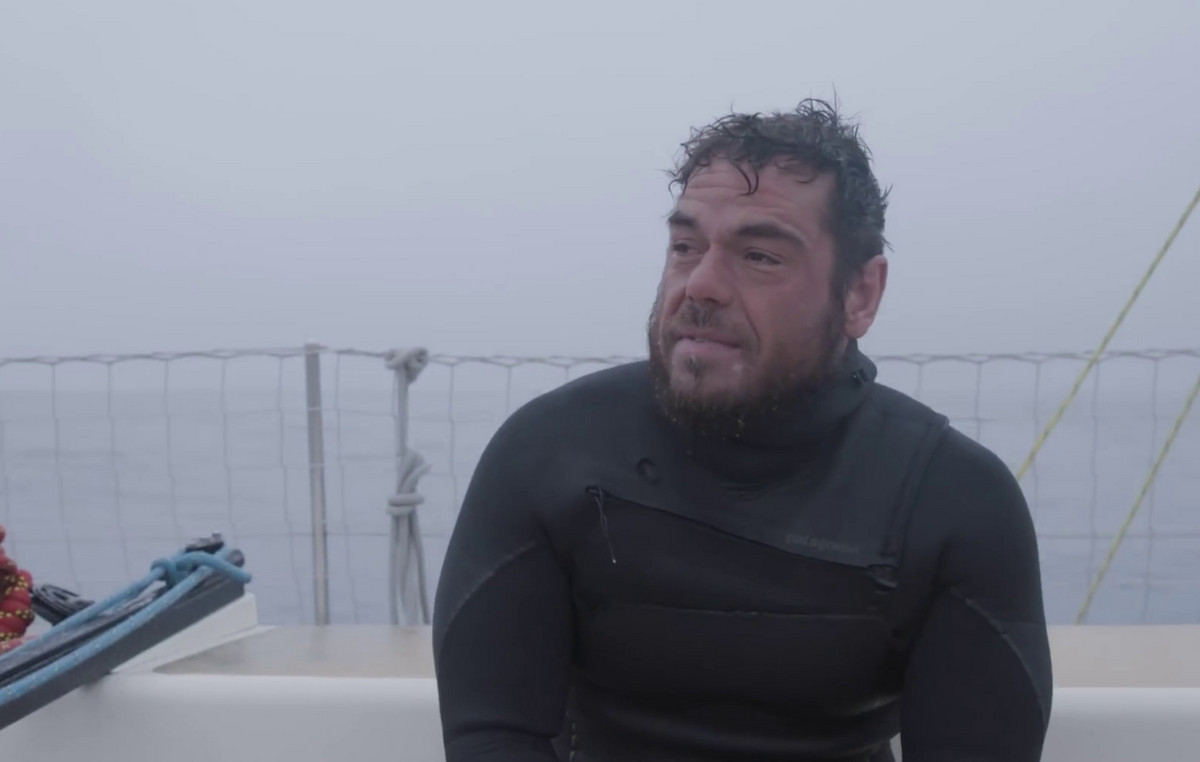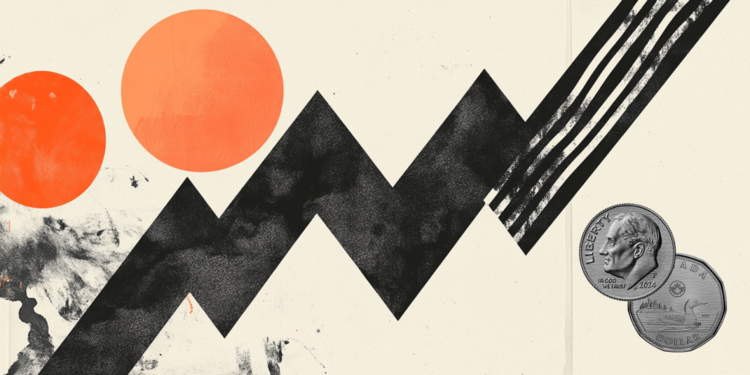It’s like looking for a needle in a haystack: an 8mm by 6mm silver capsule, smaller than a coin, is lost somewhere along a vast deserted highway in Australia’s largest state.
Miner Rio Tinto issued an apology on Monday saying it was supporting the state government’s efforts to find the capsule, which contains Cesium-137, a highly radioactive substance used in mining equipment.
Rio Tinto said it had checked all roads in and out of the Gudai-Darri mine in remote northern Western Australia where the device was located before a contractor picked it up for the journey to the state capital Perth.
Authorities believe the capsule, which emits gamma and beta rays, fell from the back of the truck, which traveled a 1,400-kilometer section of the Great Northern Highway – a distance longer than the coast of California.
Due to the tiny size of the capsule and the enormous distances involved, authorities warn that the chances of finding it are slim.
And there are fears that it has already been blown away from the search zone, creating a radioactive health hazard for anyone who finds the object in the next 300 years.
How did it disappear?
State authorities raised the alert on Friday (27), alerting residents to the presence of a radioactive spill in the southern strip of the state, including the northeastern suburbs of the capital Perth, home to about 2 million people.
According to authorities, the capsule was placed inside a package on January 10 and collected from Rio Tinto’s Gudai-Darri mine by a contractor on January 12.
The vehicle spent four days on the road and arrived in Perth on January 16th, but was only unloaded for inspection on January 25th – the date on which the capsule was reported missing.
“Upon opening the package, it was found that the meter was broken, missing one of the four fixing screws and also missing the power supply itself and all the screws on the meter,” reported the Australian Department of Fire and Emergency Services.
They believe that heavy vibrations from the truck caused by bumpy roads damaged the package – dislodging a mounting bolt that held it in place.
What’s the danger?
Experts have warned that Cesium-137 can create serious health problems for humans who come into contact with it: skin burns from close exposure, radiation sickness and potentially fatal cancer risks, especially for those unknowingly exposed for long periods. of time.
Radiation Services WA, a company that provides advice on radiation protection, says that standing within three feet of the capsule for an hour would provide about 1.6 millisieverts (mSv), the equivalent of about 17 standard chest X-rays.
Picking up the capsule would cause “severe damage” to fingers and surrounding tissue, the company said in a statement.
Ivan Kempson, associate professor of Biophysics at the University of Southern Australia, said the worst case scenario would be for a curious child to pick up the capsule and put it in his pocket.
“This is rare, but it can happen and has happened before,” Kempson said. “There have been some previous examples of people who have encountered similar things and suffered radiation poisoning, but they were much stronger than the current capsule that is missing.”
“We are all exposed to a constant level of radiation from the things around us and the food we eat, but the main concern right now is the potential health impact of the person who finds the capsule.”

Is it normal to “lose” radioactive material?
The incident came as a shock to experts, who said the handling of radioactive materials such as Cesium-137 is highly regulated with strict protocols for their transport, storage and disposal.
Rio Tinto said it regularly transports and stores hazardous materials as part of its business and hires specialist contractors to handle radioactive materials. The tiny capsule was part of a density meter used at the Gudai-Darri mine to measure the density of iron ore fed into the crushing circuit, the company said in a statement.
Radiation Services WA says that radioactive substances are transported throughout Western Australia on a daily basis without any problems. “In this case, there appears to be a failure of the control measures normally implemented,” he said, adding that he had nothing to do with the loss of the capsule.
Pradip Deb, professor and radiation safety officer at RMIT University in Melbourne, said the loss of the capsule was “very unusual” as Australian safety rules require it to be transported in highly protective cases.
The name of the logistics company used to transport the device was not disclosed, Rio Tinto said.
How’s the search going?
Authorities are trying to find the device with specialized radiation detection equipment fitted to vehicles driving slowly up and down the highway in both directions at 50 km/h.
“It will take approximately five days to travel the original route,” the DFES said in a statement on Monday.
Dale Bailey, professor of medical imaging science at the University of Sydney, said the slow speed was necessary to give the equipment time to detect the radiation.
“Radiation detectors on moving vehicles can be used to detect radiation above natural levels, but the relatively low amount of radiation at the source means they would have to ‘scan’ the area relatively slowly,” he said.

Authorities warned the public not to come within five meters of the device, but acknowledged that it would be difficult to see from a distance.
“What we’re not doing is trying to find a small device by sight. We are using radiation detectors to locate the gamma rays,” DFES officials said.
But there are fears that it is no longer in the search zone – authorities say the capsule may have lodged in the tire of another vehicle, carrying it a greater distance, or even dispersed by wildlife, including birds.
“Imagine if it was a bird of prey, for example, that took the capsule and took it away from the (original) search area – there are so many uncertainties and that will pose more problems,” said Dave Sweeney, a nuclear policy analyst and environmental lawyer. from the Australian Conservation Foundation.
“This source obviously needs to be recovered and protected, but there are so many variables and we just don’t know what could happen.”
What happens if they don’t find it?
Cesium-137 has a half-life of about 30 years, which means that after three decades the radioactivity in the capsule will halve, and after 60 years it will halve again.
At that rate, the capsule could remain radioactive for the next 300 years, said Deb of RMIT University.
“Cesium-137 is normally a sealed source – meaning if it is not broken, it will not contaminate the soil or the environment… If the capsule is never found, it will not contaminate or transfer radioactivity to the surrounding soil,” added Deb.
Kempson of the University of Southern Australia said that if it remains lost in an isolated area, “it’s unlikely to have much of an impact.”
Rio Tinto, one of the world’s biggest mining giants, operates 17 iron ore mines in the Pilbara region of Western Australia. The company’s mining activities have caused controversy in the past, including the 2020 destruction of two former rock shelters in Juukan Gorge, leading to an apology and resignation from then-CEO Jean-Sébastien Jacques.
The Cesium-137 accident in Brazil
A similar situation occurred in the Brazil , in 1987, and directly and indirectly affected hundreds of people. An abandoned radiotherapy device in the city of Goiania in Goiás, was broken and fragments of Cesium-137 spread throughout the environment, in the form of a bright blue powder.

Several sites were contaminated and the source was taken to a junkyard. Unaware of the risk, the warehouse owner distributed the shiny material among friends and relatives, who took it home.
People who came into contact with the radioactive material began to show symptoms of contamination, until the wife of the warehouse owner took the piece to the Health Surveillance Division of the State Department of Health, where it was identified.
Seven main outbreaks were identified and isolated, where there was contamination of people and the environment with high exposure rates. In total, 249 people had significant internal and/or external contamination.
Four of them died, eight developed Acute Radiation Syndrome (ARS), 14 had bone marrow failure and one person had a forearm amputation.
Source: CNN Brasil
Bruce Belcher is a seasoned author with over 5 years of experience in world news. He writes for online news websites and provides in-depth analysis on the world stock market. Bruce is known for his insightful perspectives and commitment to keeping the public informed.







